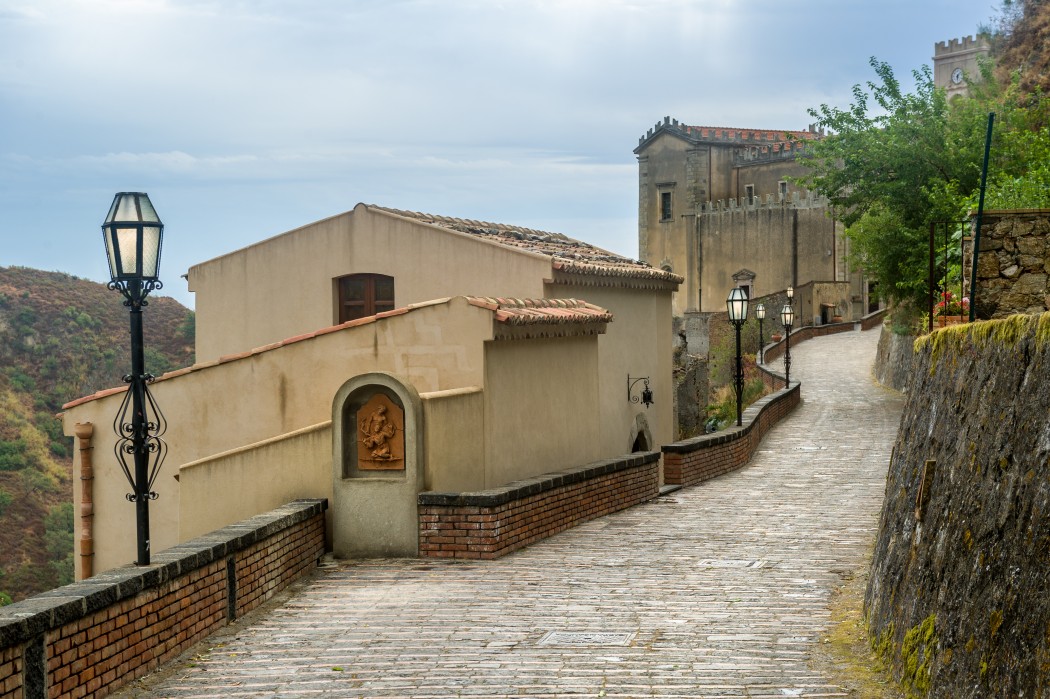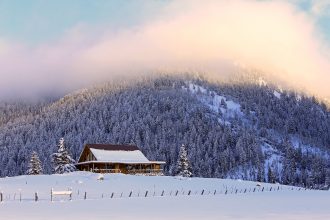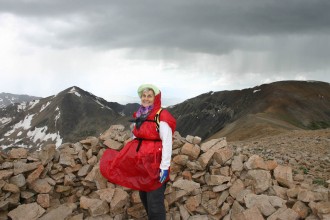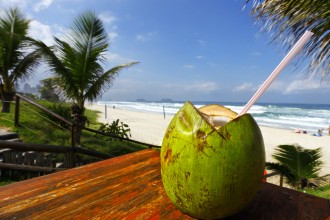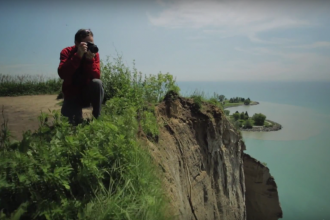Carl Russo was hanging out in a bar in downtown Palermo, Sicily, one night in 1999. A young lady walked in and took a seat, and one of the waiters commented to Russo, “Watch out for her, she’s the boss’s daughter.”
Russo thought the waiter meant the boss of the bar, but as it turned out the staff was talking, in hushed tones, about the “big” boss. The woman was a Mafia daughter.
Thus began Russo’s fascination with Cosa Nostra, the dark underbelly of Sicily. “At the time, I didn’t even know the Sicilian Mafia still existed,” Russo says. “Like everyone else who’s ever visited there, I went gaga for the beauty of the beaches, the food, the fascinating architecture—from Greek temples to Baroque churches—and the warmth of the people.”

Godfather Bernardo Provenzano’s hideout | Corleone Credit: Carl Russo
Learning about the still-very-active Cosa Nostra affected him deeply, and he started discovering more. “I learned about all the hundreds of anti-Mafia activists and members of law enforcement who were assassinated, and knew they were going to be assassinated. And so many of these stories have never been told in English. From a writer’s standpoint, I couldn’t resist. But as a human being in love with Sicily, I wanted to bring it all out into the open.”
This Russo did in his new book, The Sicilian Mafia: A True Crime Travel Guide, creating a first-of-its-kind guidebook that allows visitors to discover Mafia landmarks: where the murders happened, where the godfathers lived, and where their victims are buried. Even if you’re not travelling to Sicily, or visiting such sites is a little too morbid for your tastes, the book is a captivating look at Cosa Nostra’s 150-year-old history for anyone interested in unique travel, crime or Italian history. Its tales of murder and mayhem seem at odds with the picturesque Mediterranean fishing villages of Sicily.
“Sicily is such a popular vacation spot for so many reasons,” Russo says. “And to tourists, the Mafia is totally invisible. It would rather make money than make headlines. So a visitor would have no idea that most business—hotels, restaurants, gas stations, car dealerships—pay the local crime family protection money.”

Abbey at Santo Stefano Quisquina | Credit: Carl Russo
But Russo says that a small but increasing group of anti-racket merchants have been refusing to pay, taking a public stand and putting big Adiopizzo stickers in their shop windows. The book lists the website and businesses that defy the mafia, even at their peril, so that tourists can support them. “I heartily endorse this kind of ethical tourism.”
Russo thinks the book will appeal to the kind of traveller who likes to read up on the history of a place on the plane ride over. And, he hopes that his accounting will help demythologize and deglamorize the gangsters.
He started writing the book after a return trip to Sicily in 2006, a week after Italy’s top most-wanted mafioso, Bernardo Provenzano, was captured. “This old man was smiling as the police rushed him, and the room had saints and he had crosses hanging from necklaces,” Russo says. “It took a few days of asking people in Corleone how to find the shack [Provenzano had been holed up in]. Nobody wanted to tell me. I finally found someone to give me directions, and I shot up the mountain to photograph it.”

Bandit Salvatore Giuliano’s tomb, Montelepre | Credit: Carl Russo
Russo also tracked down the location where Italy’s most famous bandit, Salvatore Giuliano, was gunned down. At that point, he realized that no book told where these places were; he couldn’t even find a list of Mafia locations published anywhere. For six years Russo researched the stories, running around the Sicilian outback in what he says seemed like an impossible task.
One of Russo’s favourite locations is an old 18th-century abbey in the woods outside of a village called Santo Stefano Quisquina. “You’ll find nothing inside the abbey or even on the Web about the horrible things that happened in this beautiful Benedictine abbey. It’s so cool and peaceful, and yet the monks there in the 1920s were basically mafioso. I titled the chapter, ‘The Mad Monks of Santa Rosalia.’ A gruesome murder inside. It could almost be a symbol for the Mafia presence in Sicily: beautiful to look at, but so evil inside.”

